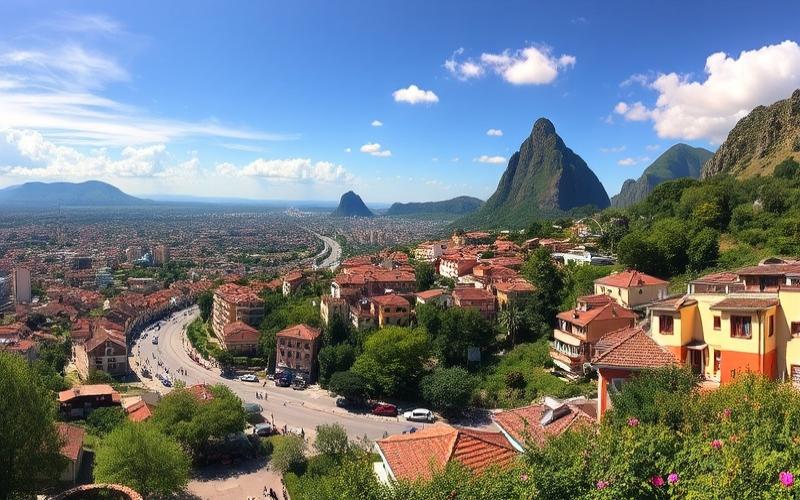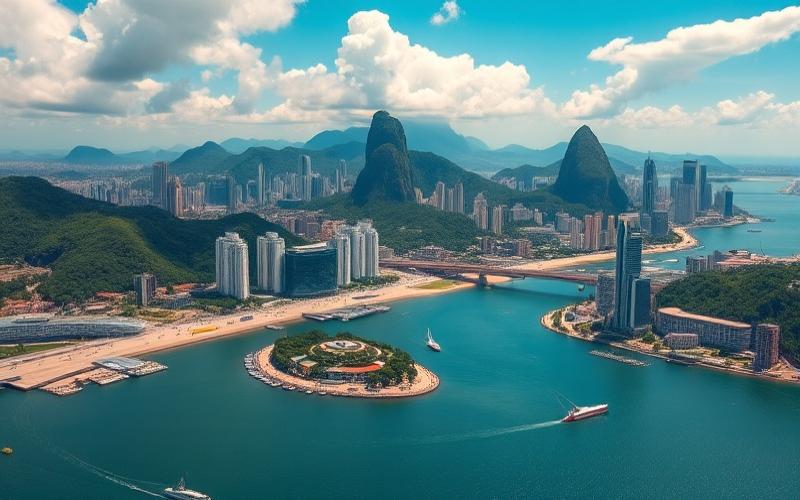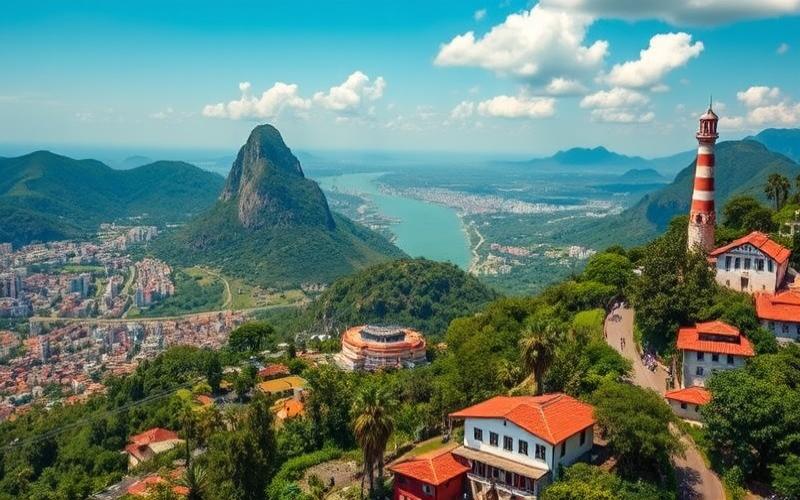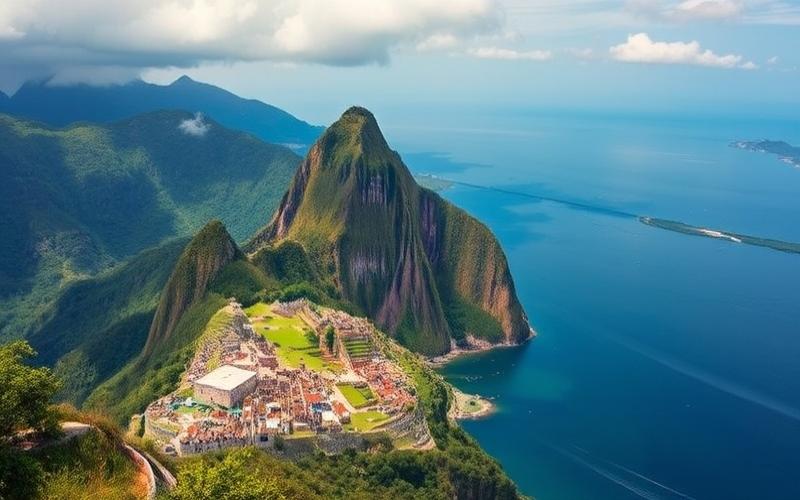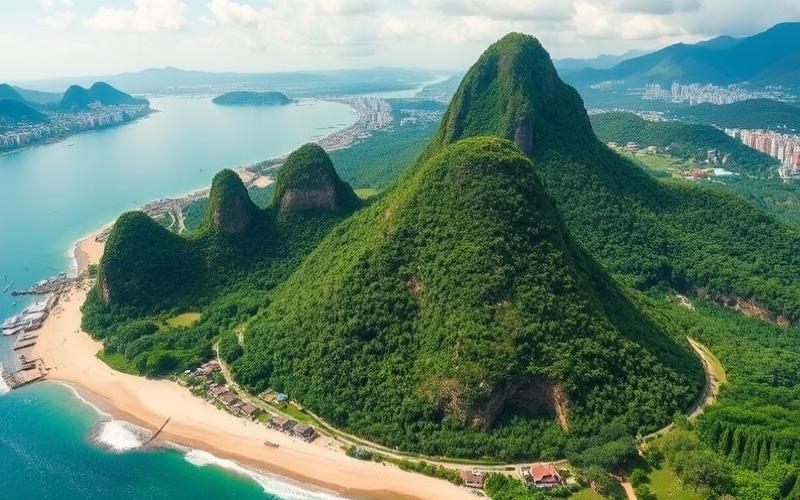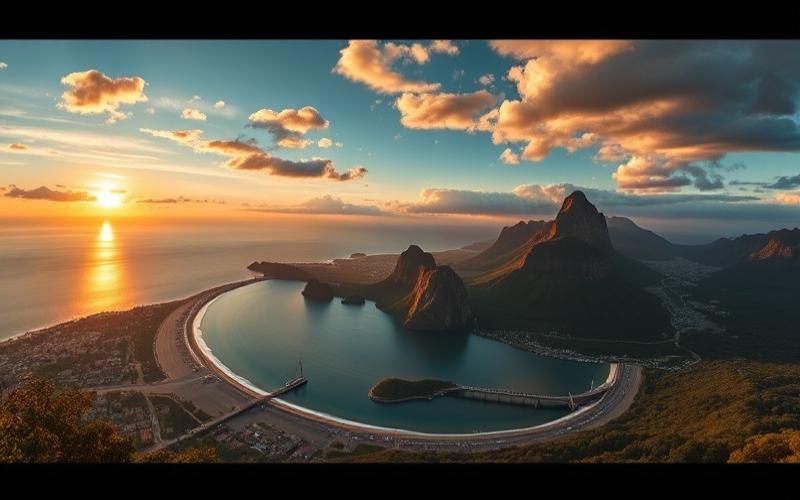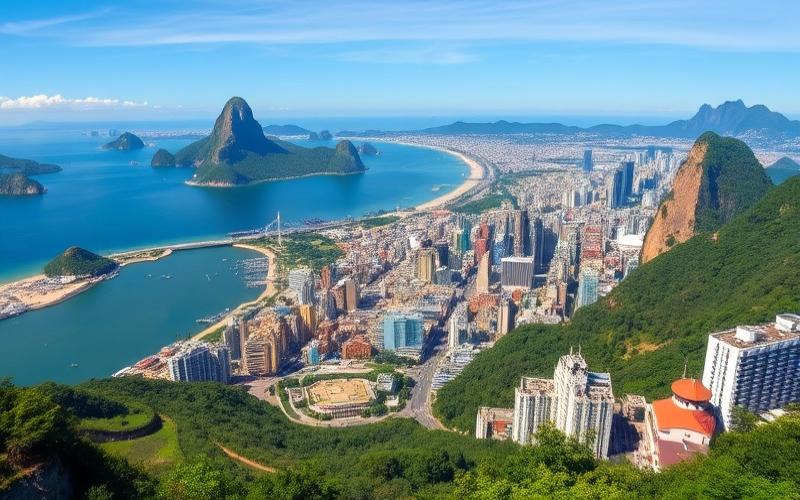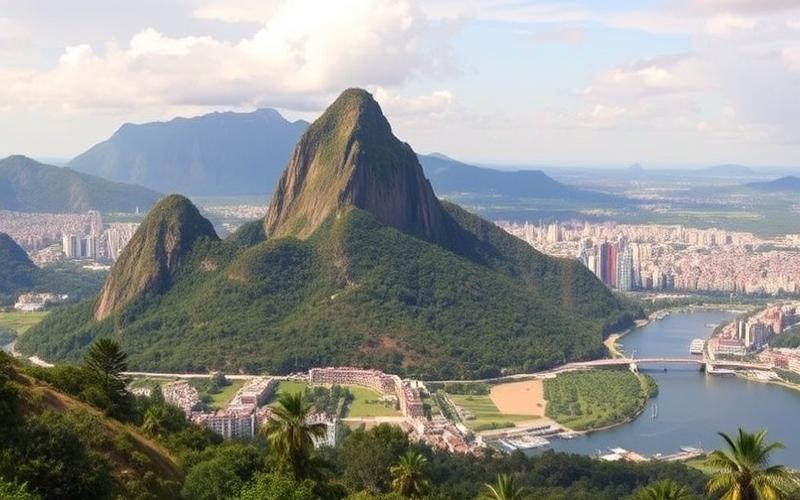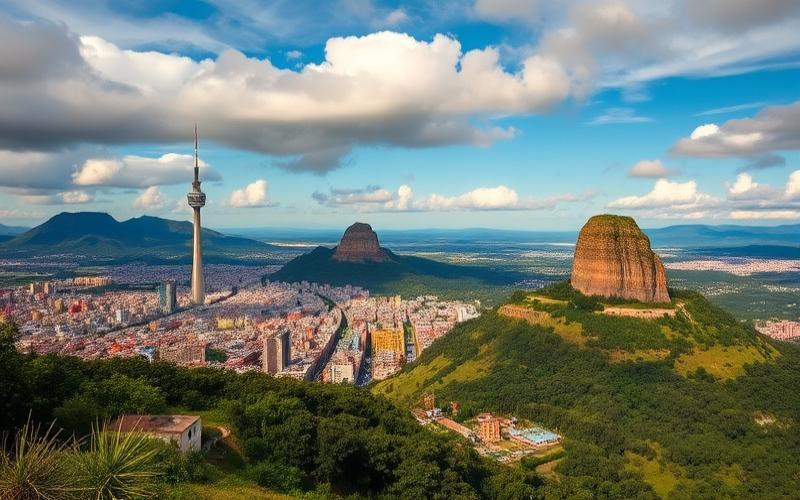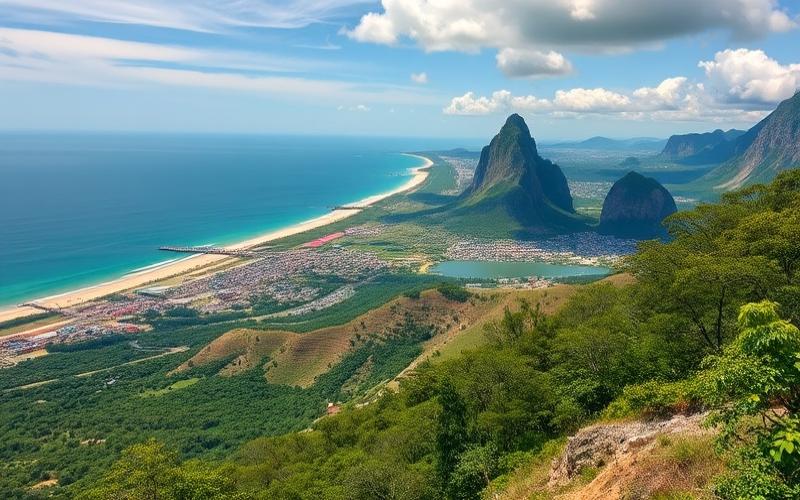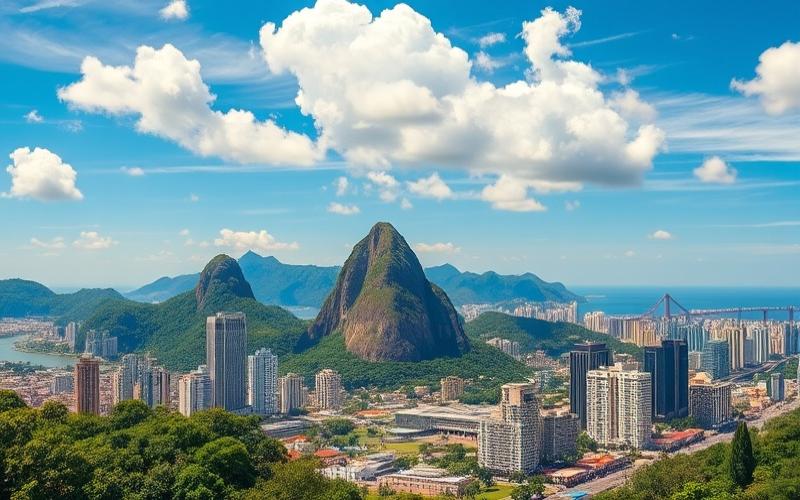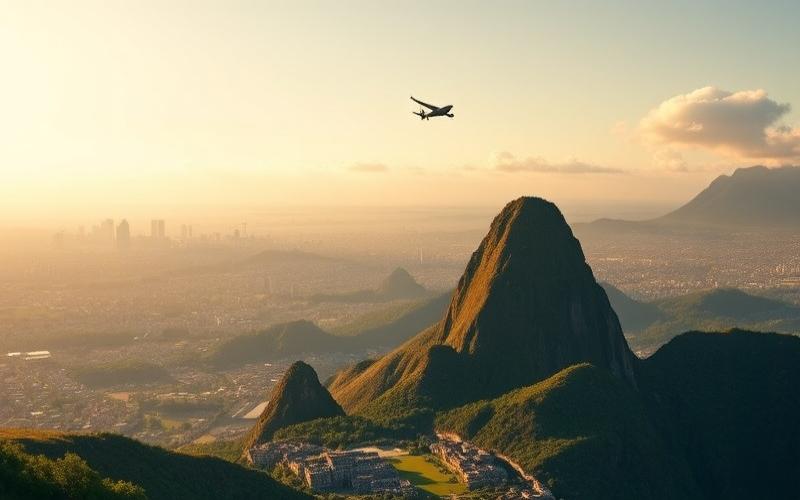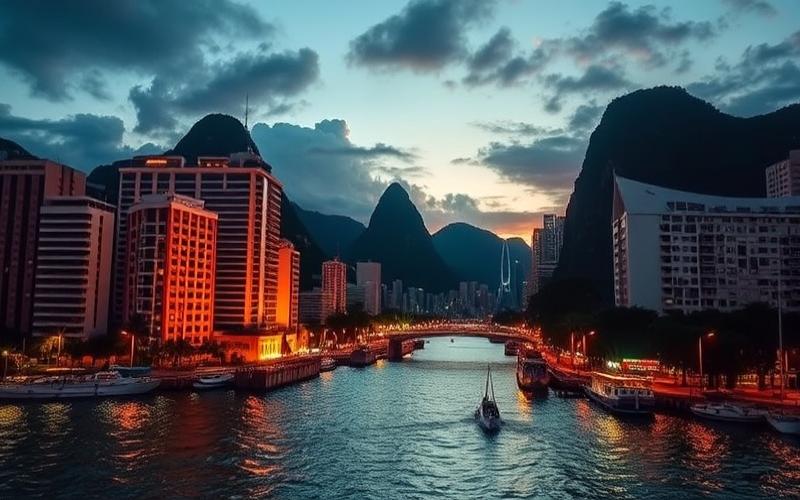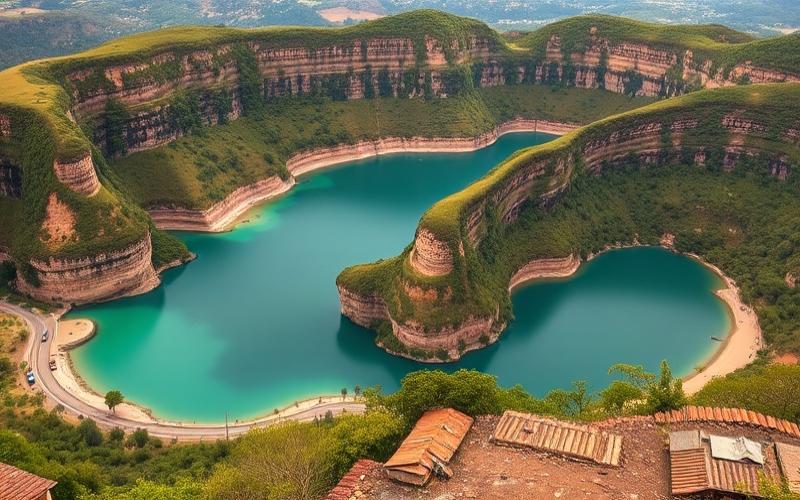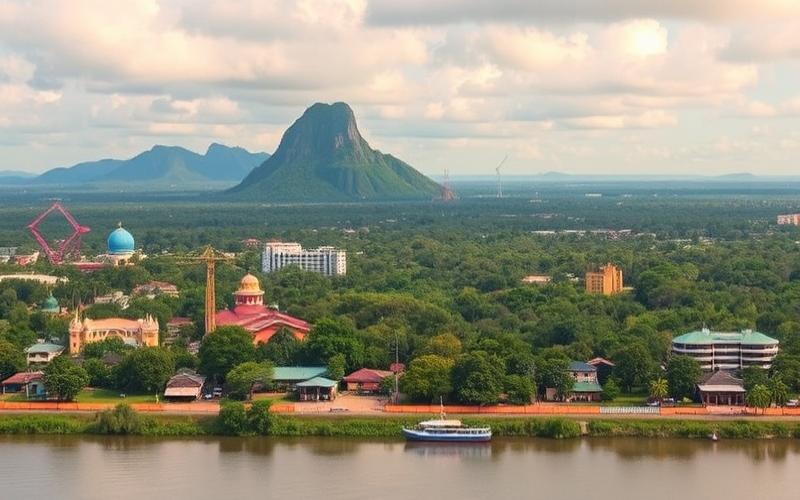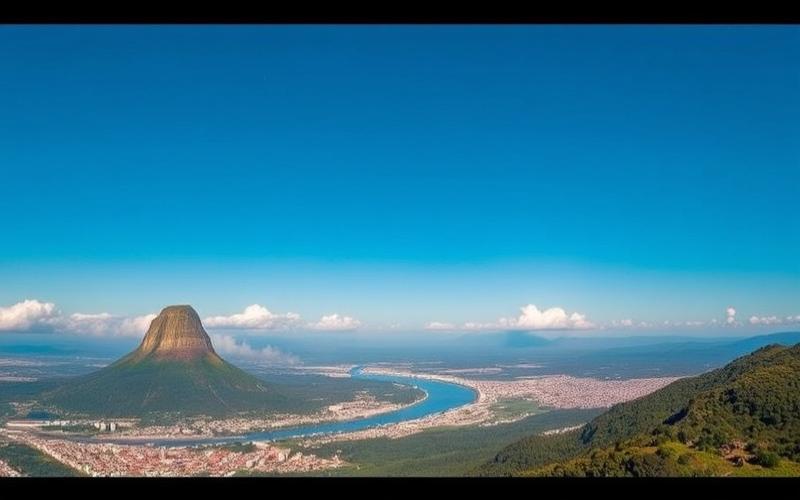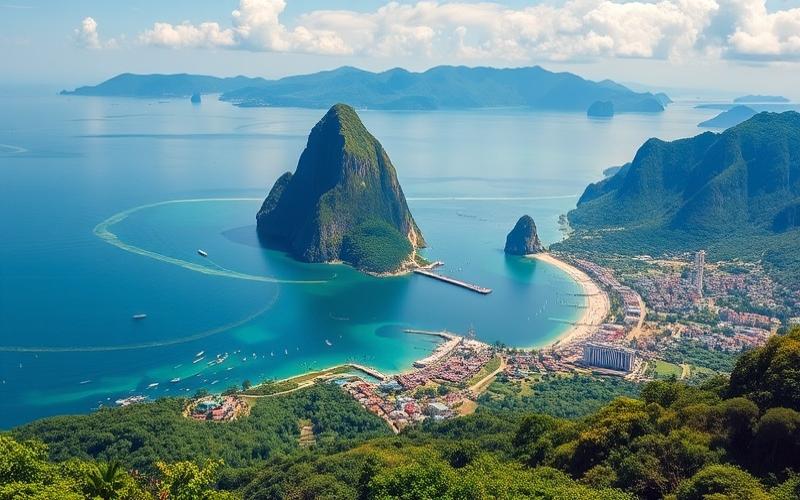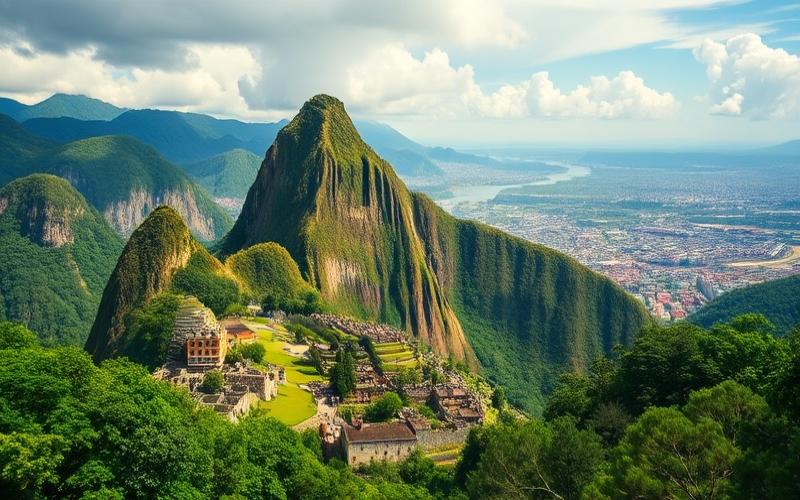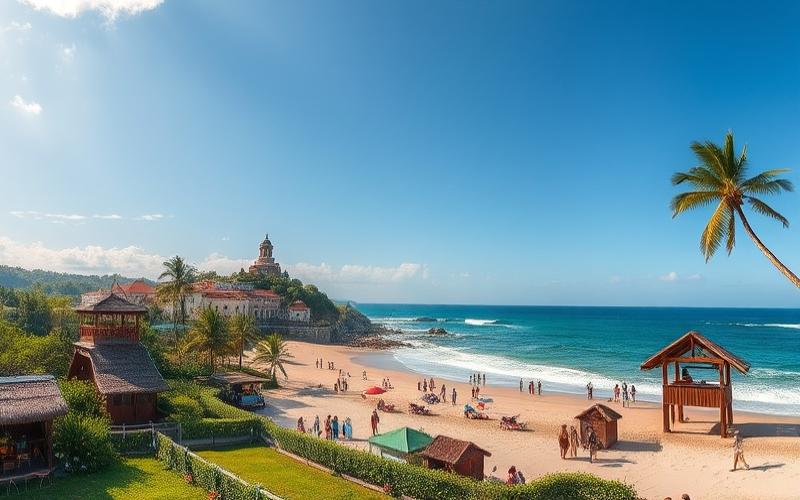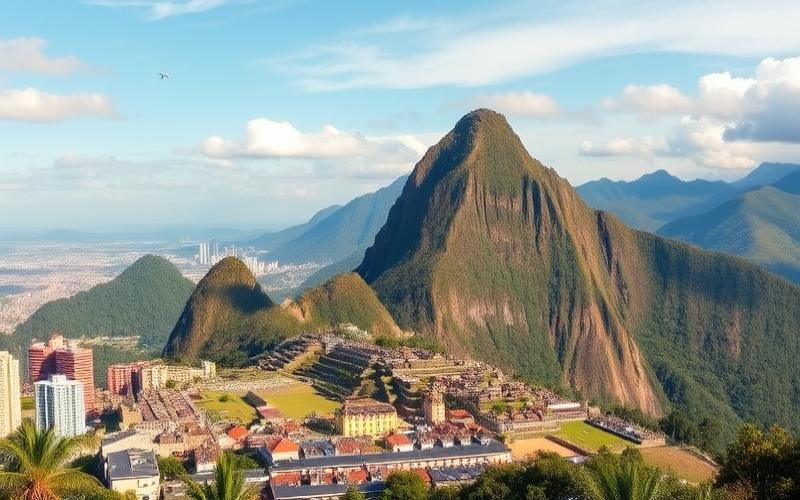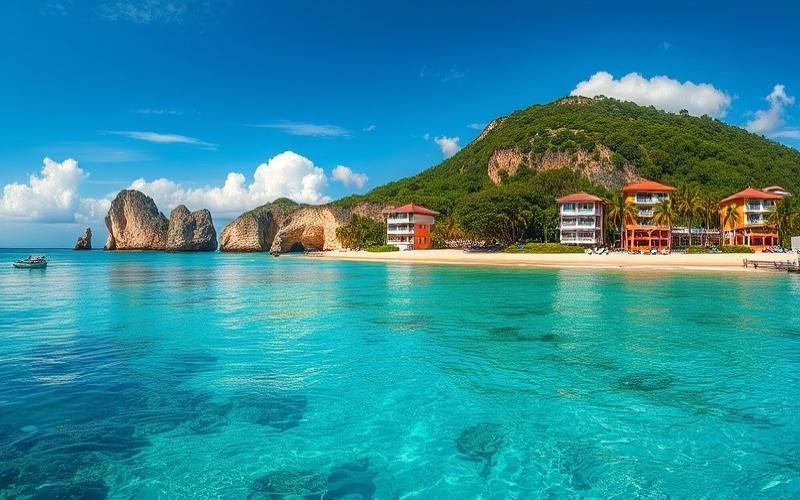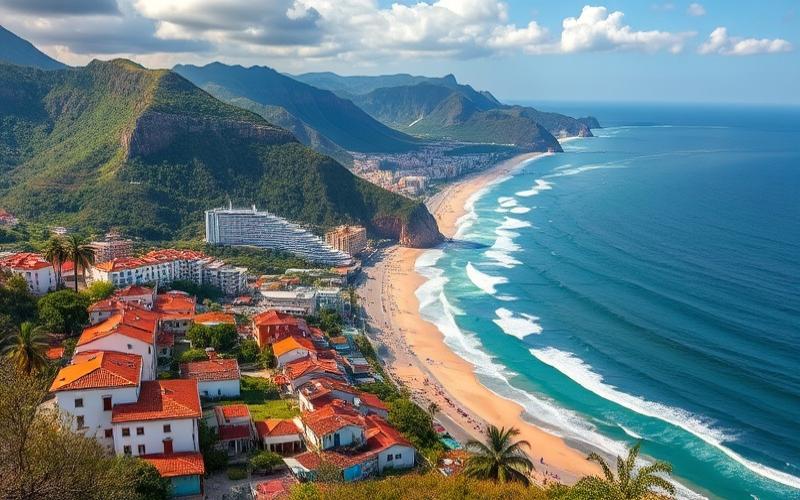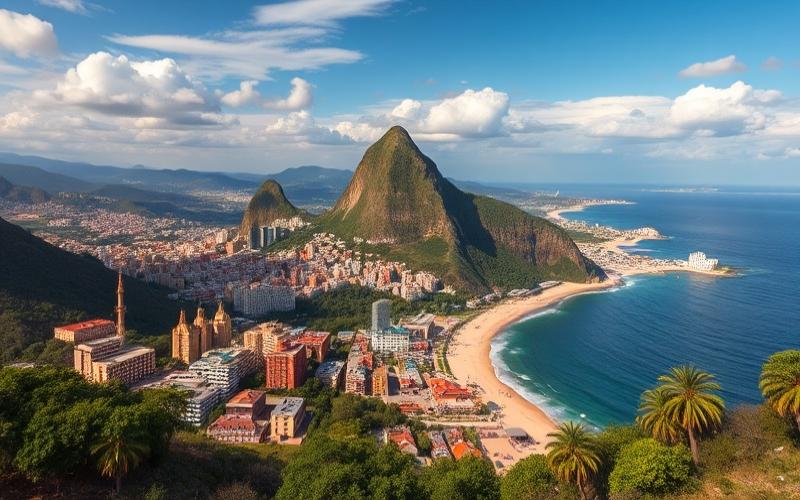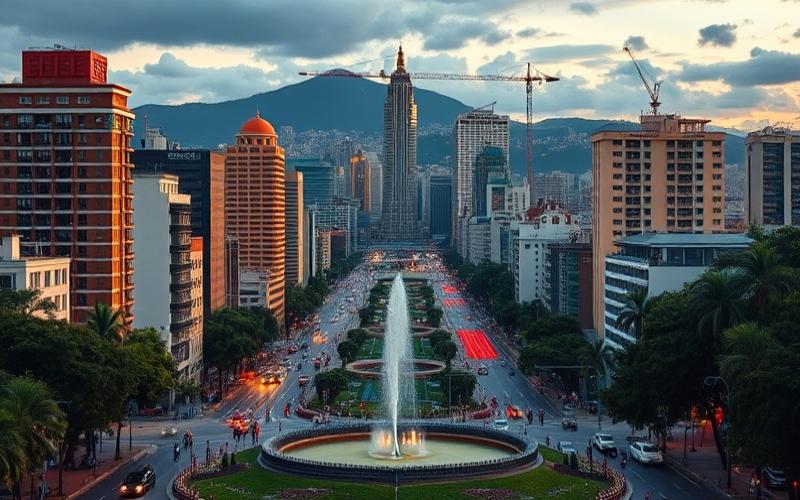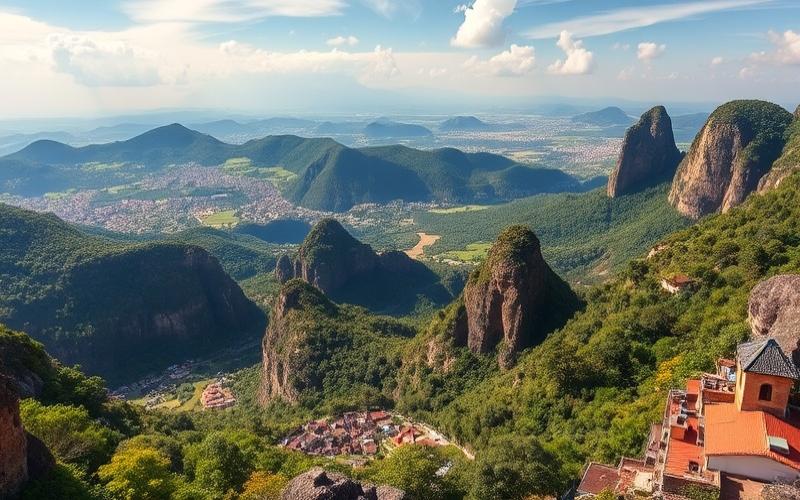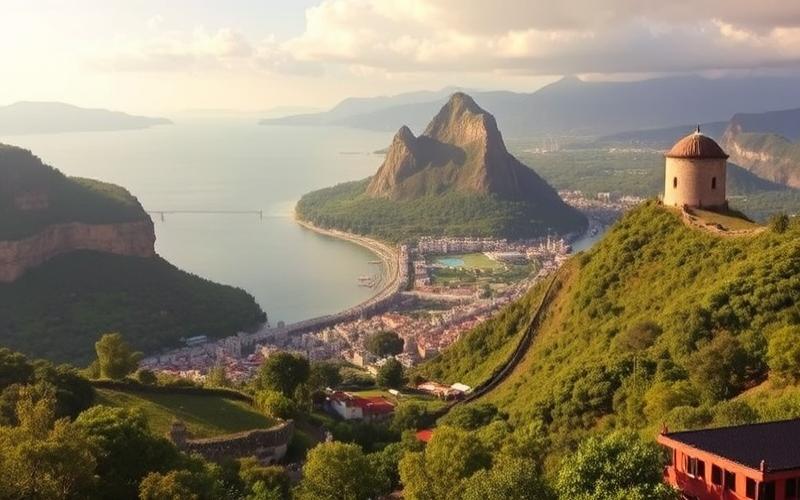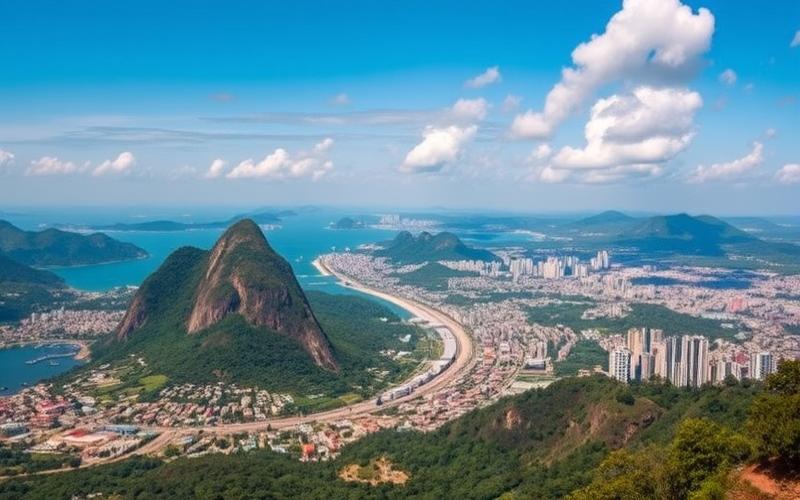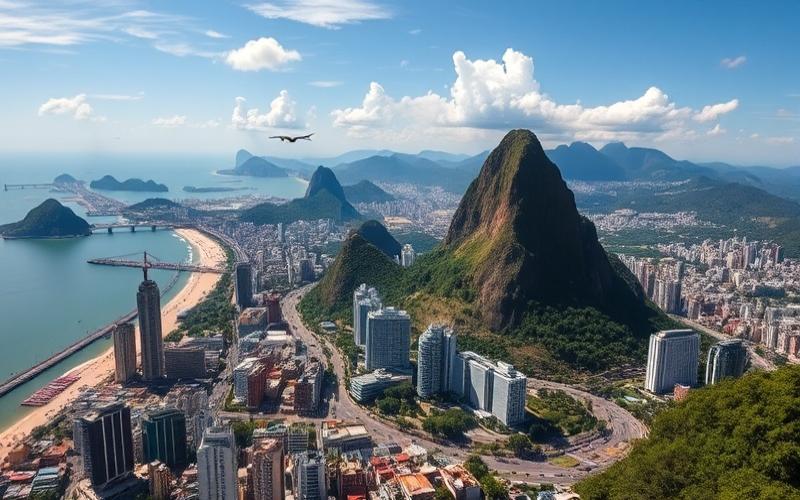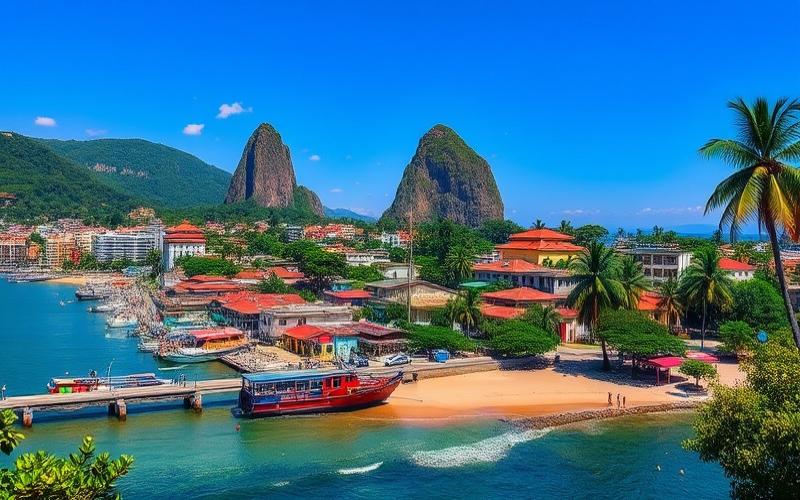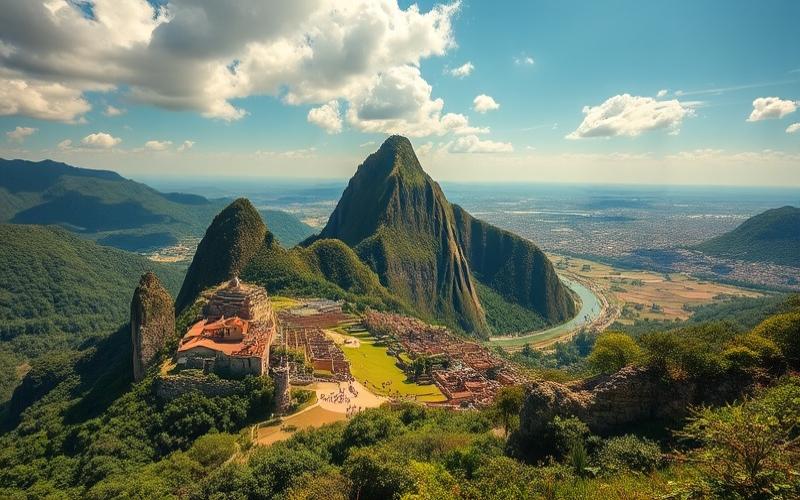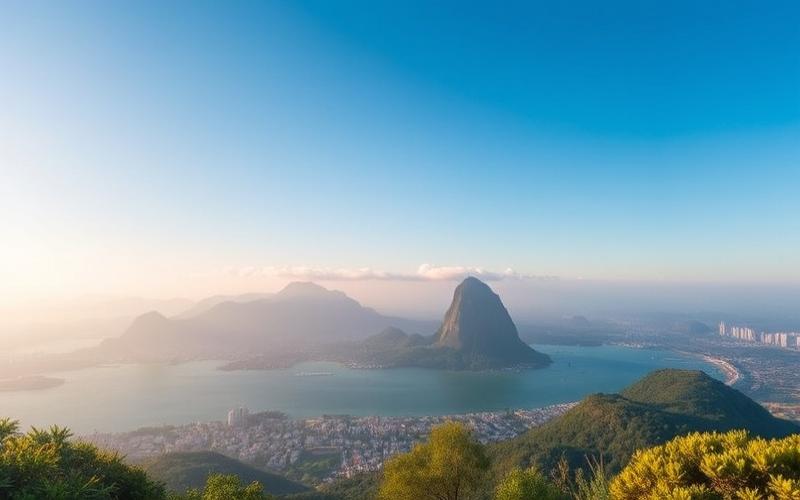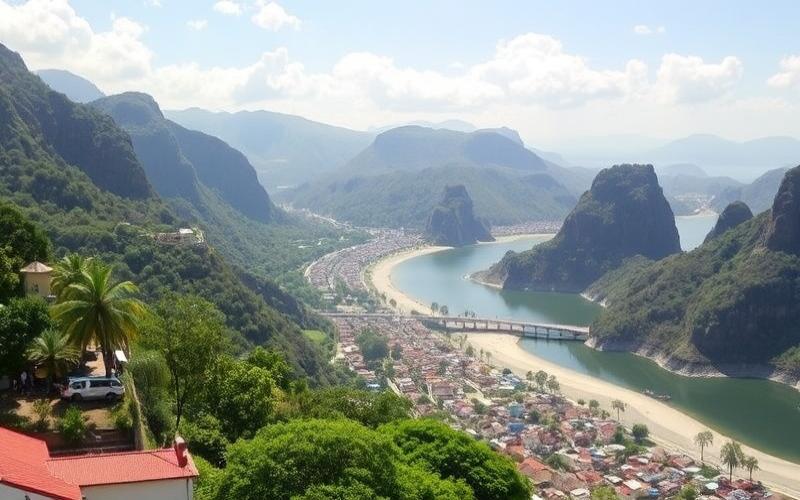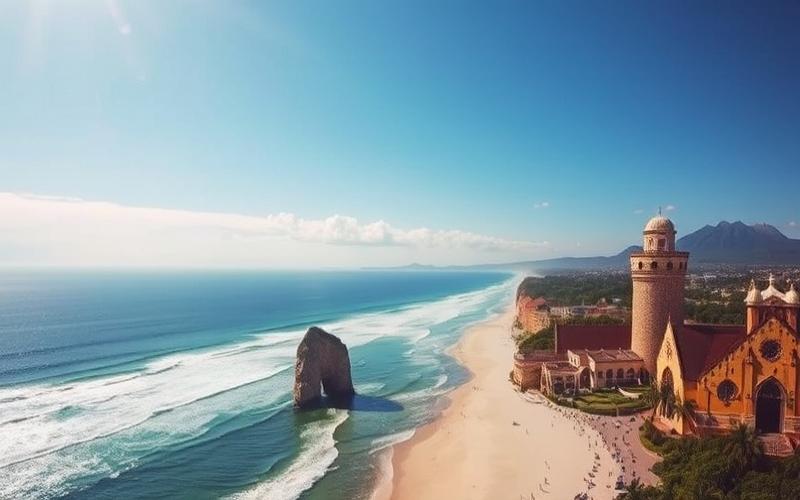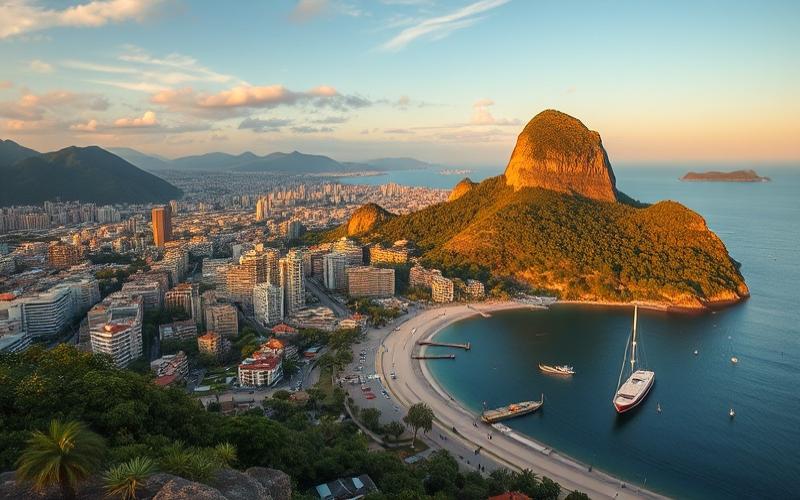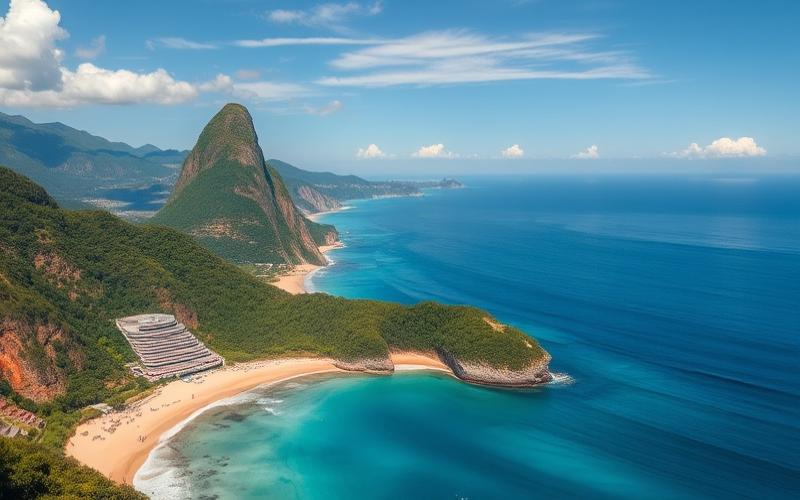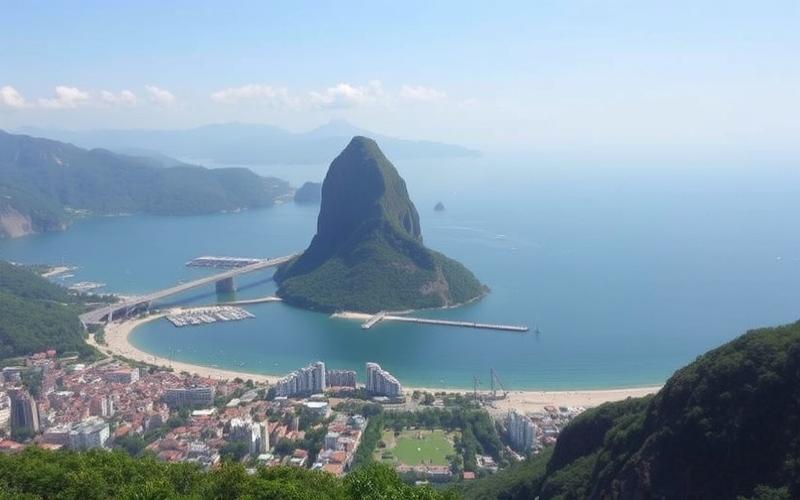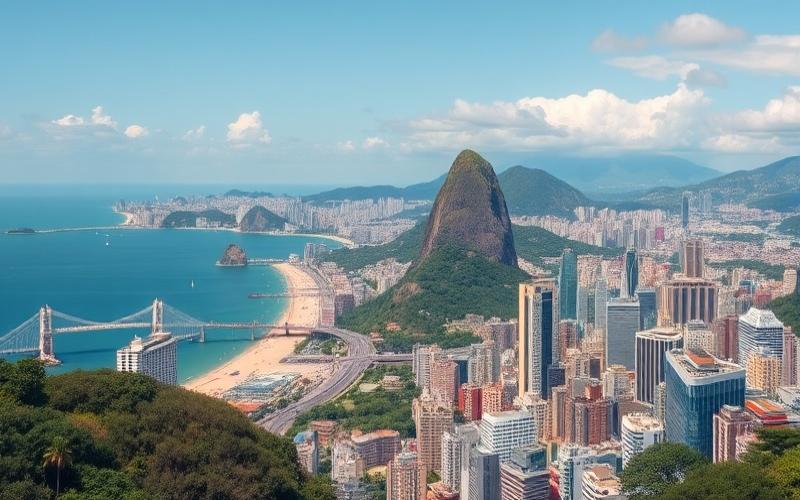
 Published on and written by Cyril Jarnias
Published on and written by Cyril Jarnias
In a market as dynamic and vast as Brazilian real estate, buyers and investors face a multitude of crucial decisions. One growing trend is the use of retouched photos to enhance properties for sale.
While these images may be appealing at first glance, they often hide less attractive realities, creating unrealistic expectations and generating potential disappointments during actual visits.
Behind the perfect appearance of these houses often lie imperfections that only an in-person visit could reveal.
In a country with vast architectural diversity and abundant offerings, it’s essential for potential buyers to distinguish reality from visual fiction to make informed decisions and avoid the pitfalls of an investment based on misleading imagery.
Deciphering Real Estate Listings in Brazil
Reading between the lines of Brazilian real estate descriptions
- Identify common euphemisms:
- “Vista lateral mar” = limited sea view, often from an angle or balcony, not a front view.
- “Próximo ao metrô” = can mean 10–15 minutes walking, or a bus line to the subway, not necessarily a station 300m away.
- “Rua tranquila” = low-traffic street, but may be noisy in the evening (bars, events) or less safe at certain hours.
- “Condomínio completo” = pool, gym, party room; check if maintenance is up to date and usage hours/rules.
- “Reformado” / “recém-reformado” = sometimes superficially refreshed (paint, lighting), not structural renovation (electrical, plumbing).
- “Pronto para morar” = habitable, but may require equipment (cabinets, gas water heater, air conditioners).
- “Área útil” vs “área total”: in Brazil, “área total” often includes common areas and parking space(s); always compare “área privativa” (private area).
- “Sem vaga” = no parking in a country where cars are common; strong impact on resale in some urban areas.
- “IPTU baixo” = low property tax, sometimes offset by high condominium fees or upcoming maintenance.
- Look for typical omissions:
- Orientation and sunlight (north/south facing): essential for heat and light in cities like Rio, São Paulo, Recife.
- Building age, elevator condition, water reserve (cistern/water tank) and generator.
- Noise exposure (nearby favela, bus routes, weekend funk parties).
- History of leaks/mold, water pressure on higher floors.
- Exact monthly fees: condomínio, IPTU, gas, reserve fund.
- Condominium rules: pet policy, short-term rental (Airbnb), quiet hours, renovation restrictions.
Tips Used by Brazilian Advertisers
Word choice:
- Value-enhancing terms: “alto padrão”, “prédio com lazer”, “andar alto”, “varanda gourmet”, “planta bem distribuída” to create a premium effect.
- Elastic location: “Zona Sul” or “Jardins” used broadly; verify exact neighborhood, street, and actual proximity to points of interest.
- Security emphasis: “portaria 24h”, “monitoramento”; ask if it’s an on-site concierge or remote monitoring.
Information order:
- Strong points first (view, “high floor”), limitations pushed to the end or in notes (lack of parking, ground floor, no elevator).
- Overvaluation of total square meters; actual private area sometimes mentioned lower down.
Legal mentions and regulatory details that go unnoticed:
- Agent’s CRECI number (mandatory); verify authenticity to avoid fake intermediaries.
- Indication of monthly taxes and fees: should be displayed on major platforms (QuintoAndar, ZAP, Viva Real), but sometimes relegated to a secondary tab.
- Legal situations: “documentação ok” doesn’t exclude real charges (condominium debts, approved works not yet billed).
- In condominiums: short-term rental restrictions may impact rental yield.
Tips for Effectively Comparing Listings
Build a standardized comparison table:
| Criterion | Listing A | Listing B | Listing C |
|---|---|---|---|
| Private area (m²) | |||
| Total area (m²) | |||
| Bedrooms/suites | |||
| Floors/elevator | |||
| Parking space(s) | |||
| Condominium fees (R$) | |||
| Monthly IPTU (R$) | |||
| Year built | |||
| Orientation | |||
| Noise/risks | |||
| Actual distance subway/beach (m) | |||
| Amenities (pool, gym) | |||
| Renovation state (structural vs cosmetic) | |||
| Rules (pets, Airbnb) | |||
| Asking price (R$) | |||
| Price/m² private (R$) |
Standardize data:
- Calculate price per private m² to avoid illusions related to “total area.”
- Relate monthly fees to m² and target rental income if investing.
- Geolocate each listing and measure exact distances (subway station, hospital, school, shops).
Use local tools:
- Brazilian platforms (QuintoAndar, Viva Real, ZAP Imóveis) allow fine filters, price history and sometimes automated comparison.
- On QuintoAndar, leverage AI features for price comparison and advanced search to detect overpriced properties or undervalued areas.
Virtual Tours: How to Keep a Critical Eye
Checks to do during 3D/video tour:
- Note perspective consistency: wide-angle lenses exaggerate depth; compare door width (≈70–80 cm) to estimate scale.
- Look for areas not shown: service rooms, laundry room, direct views from windows, opposite facade.
- Observe often revealing details: ceiling stains, warped baseboards, blackened bathroom grout, cracks around windows.
- Request dimensioned plans, unedited continuous video, and recordings of sound environment (balcony with open window).
Brazil-specific points:
- Check presence and condition of gas water heater (boiler), split air conditioners, screens/mosquito nets, and natural ventilation.
- Ask about water pressure on higher floors, gas supply (copper pipes vs old flexibles), and protection against power outages (generator).
- Request a video of complete path: street → concierge → elevator → hallways → apartment → view from each window.
Concrete Examples of Retouched Photos and Warning Signs
- “Caribbean blue” sky and view at Copacabana/Ipanema:
- Increased saturation and compressed perspective to suggest front sea view; actually side view between buildings.
- Clues: distorted horizon, slanted building lines, abnormally bright water reflections.
- Enlarged “gourmet balcony”:
- Stitched panoramas widening terrace; table appears proportionally too small, railing abnormally low.
- Compare to elements of known size (60×60 tiles, air conditioner).
- “Flawless” interior lighting:
- Removal of outlets, cables, cracks via retouching; blurred wall textures, repeated tile patterns without random grout.
- Verify with raw video and requested close-ups of sensitive areas.
- “Quiet street” hiding bar/club 50m away:
- Camera angle avoiding commerce facade; visit Google Street View and request night/weekend video from street.
- “High-end” wood and marble colors:
- “Warm tone” filters uniformizing materials; marble veining repeats, sign of AI or duplication.
- Demand photos in natural light, without HDR, taken with reference object (ruler, A4 paper).
Specific Strategies of Brazilian Agents and How to Respond
- Concierge and security as value arguments:
- Emphasis on 24h concierge and access control; ask if physical presence or remote monitoring, associated costs and incident history.
- Highlighting “amenities”:
- Condominium clubs with pool, sauna, barbecue area; check condition, maintenance cost, and usage rate. A “complete condominium” can double fees.
- Emphasis on “high floor” and “morning sun/afternoon sun”:
- In Rio, “morning sun” is sought to avoid afternoon heat; confirm orientation via compass and window sun exposure during visit.
- Turnkey packages for investors:
- Rental management, “guaranteed rent”, standard furniture; ask historical occupancy rates, exit clauses, and if condominium allows short-term rental.
- Advanced digital marketing:
- Professional photos, 3D virtual tours, multi-platform distribution (Viva Real, ZAP, social media), and AI comparators for price positioning.
- Use these same tools to audit listing: compare area price/m², price trajectories, and time on market.
Practical Tips and Checklist
Before contact:
- List “non-negotiables” (noise, orientation, parking space, maximum fees).
- Verify agent’s CRECI and agency reputation.
- Geo-validate address, terrain, flood risks, proximity to noisy routes.
During exchange:
- Request:
- Uncut video of property and surroundings.
- Dimensioned plan and “private” vs “total” areas.
- Exact values for condominium, IPTU, reserve fund, potential debts.
- Building age, last elevator inspections, waterproofing reports.
For negotiation:
- Point out concrete defects (leaks, no parking, facade needing renovation) to adjust price.
- Compare with recent neighborhood references (price/m², selling time) and use AI-powered price comparison tools when available.
For investors:
- Avoid overvaluing profitability: include vacancy, management fees, taxes, maintenance of “amenity” equipment.
- Verify if condominium allows short-term rental and applicable municipal regulations.
Good to Know :
To effectively decipher real estate listings in Brazil, it’s crucial to carefully read between the lines of descriptions, often embellished by strategic word choices like “cosy” to indicate limited spaces or “close to amenities” without specifying exact distance; also pay attention to the order of information where defects are sometimes relegated to the end of the list. Legal mentions, like the habitation certificate (habite-se), sometimes omitted, are nevertheless essential. Compare listing photos with conditions visible during virtual tours, as retouching techniques such as adding light or widening rooms are commonly used to attract buyers. In the Brazilian market, listings may also deliberately omit neighborhood details, so verify the property on local platforms or ask residents for authentic insights about the property’s real environment.
Avoiding Scams Through Listing Verification
Verifying the authenticity of photos published on Brazilian real estate listings is essential: retouched or overly “perfect” images can hide real defects, give a misleading impression of space, or even come from another property. Common signals include excessively saturated colors, localized blurring, unusually flattering angles, and overly smooth textures that betray retouching or manipulated virtual tours.
Techniques and Tools to Detect Photo Alterations:
- Methodical visual inspection: look for perspective inconsistencies, shadows, reflections, “jagged” edges around objects, or duplicated elements; compare weather, season, and contextual details with provided description.
- Reverse image search: upload photo to Google Images, TinEye or similar tools to spot if image exists elsewhere, in another context or for another property.
- Context verification with dedicated tools: use Google’s “More information” features for images, trace its first indexing, and consult Fact Check Explorer to see if image has been previously verified.
- Virtual tour analysis: check continuity between rooms, proportion consistency, material fidelity and presence of artifacts; smooth navigation and natural textures are positive indicators, while distortions or garish colors signal aggressive retouching.
Quick Identification Table: Reliable vs Suspicious Photos
| Criterion | Reliability Indicator | Warning Signal |
|---|---|---|
| Light/shadow consistency | Aligned shadows, natural reflections | Impossible shadows, inconsistent reflections |
| Details and textures | Sharp details without excess | Smoothing, localized blur, halos |
| Proportions/volumes | Consistent perspectives across multiple views | Line/volume distortions |
| External context | Image not found elsewhere or source consistent | Image already used for other properties |
| Image history | Verified metadata/contexts | Manipulated context per Google/Fact Check tools |
Verifying Seller Information:
- Complete and traceable contact information: local number, professional email, agency address; be wary of contacts only via encrypted messaging. Request proof of registration or agent license.
- Listing history: search their old listings, verify description consistency, recurrence of identical images for different properties, and check reviews from previous clients on platforms and professional networks.
- Documentary consistency: cross-reference property data (area, condominium, taxes, registration number) with official records or provided documents; watch for blurred or partially hidden documents, common practice in fraud.
Necessity of In-Person Visits or Through Trusted Agents
- Schedule physical visit to validate actual condition, nuisances, lighting, and compliance with photos.
- If not possible, organize live video tour, requesting slow pans, on-screen measurements and views of “hidden” areas (under sink, common areas, facade, neighborhood).
- Use certified agent able to justify their status, answer precisely and handle administrative verifications.
Warning Signals Indicating Potential Scam:
- Abnormally low price compared to local market; requirement for urgent or non-refundable deposit without visits or guarantees.
- Overly perfect photos, angles systematically avoiding defects and technical areas; virtual tours with breaks or visual discrepancies.
- Seller insisting on communicating outside platforms, refusing to provide complete documents or organize verifiable visit.
- Listing reusing images found elsewhere, or inconsistencies between description, weather/season and elements visible in photos.
Actionable Checklist Before Any Commitment:
- Perform reverse image search on each key photo.
- Use Google’s “More information” and Fact Check Explorer tools to trace history and context of suspicious images.
- Request additional unedited, timestamped photos/videos with views of defects and surroundings.
- Verify agent identity/license and listing history and client reviews.
- Schedule in-person visit or live video demanding measurements and static shots of sensitive areas.
- Refuse any advance payment without formal contract and complete documentary verifications.
Good to Know :
To avoid scams in the Brazilian real estate market, it’s crucial to verify listing photo authenticity, as retouched images can give a false impression of the property. Use online tools to detect photo modifications and ensure seller information reliability, such as contact details and listing history. Verify property details validity by comparing provided information with other sources and prioritize in-person visits or through trusted agents to confirm the property’s actual condition. Be vigilant for warning signals, like prices well below market or requests for advance payments, which could indicate a scam.
The Importance of Realistic Virtual Tours in Real Estate
Realistic virtual tours reduce the misleading effect of retouched photos by offering interactive 360° exploration where the buyer controls angle, distance and path, revealing space, flow and finishes more faithfully than a static retouched image. They allow moving from room to room, zooming on details and projecting into the space, limiting advantageous framing and perception gaps between listing and reality.
- Key advantages for remote buyers (including Brazil)
- Access properties 24/7 from anywhere, expanding search beyond geographical constraints and enabling pre-selection without travel.
- Visit multiple properties quickly, reducing costs and travel time — major advantage in a vast country where intercity distances are significant.
- Focus physical visits on truly relevant properties, streamlining decision and reducing unproductive visits.
- Transparency and trust
- By showing property in consistent “permanent opening” from room to room, virtual tours reduce dissonance between listing and actual visit, strengthening trust and quality of buyer-seller relationship.
- Buyers can examine critical elements (layout, lighting, views, materials) at their pace, clarifying expectations and promoting informed decision.
- Technologies used and recent evolution
- Capture via 360°/3D cameras and photogrammetry, assembly into navigable digital twins, with viewpoints connected in mesh for fluid movement.
- Integration of interactive tools: in-app measurements, annotations, layout changes and finish visualization, enhancing decision utility beyond simple visual rendering.
- Maturity growth: better image quality, smoother navigation, multi-platform availability (web/mobile), and 24/7 availability standardizing “pre-visit” at large scale.
- Operational benefits for ecosystem
- Reduction of unnecessary travel and optimization of agent and owner time, with more qualified lead screening.
- Marketing differentiation and increased listing reach to international or inter-regional buyers.
- Integration challenges in Brazilian market
- Technology access: cost of 360°/3D equipment, uneven high-speed connectivity quality by region, and media weight for smooth mobile experience.
- Professional adoption: agent training needs, integration with CRMs and real estate portals, standardization of paths (plans, tags, measurements) to ensure comparability.
- Quality and ethics: need for charters to limit excessive digital “staging” and maintain realism promise that builds trust.
- Buyer and seller awareness: education on virtual tour value in pre-selection, to avoid expectation of total substitution for final visit.
| Objective | How Virtual Tour Addresses It | Impact for Brazil |
|---|---|---|
| Reduce effect of retouched photos | User control, space continuity, multiple views | Less information asymmetry over long distances |
| Accelerate pre-selection | Quick multi-visits, 24/7 | Time and inter-state travel savings |
| Strengthen trust | Consistent experience, verifiable details | Better listing/ground match |
| Industrialize marketing | International reach, differentiation | Attract expatriate buyers and other regions |
Realistic virtual tours don’t replace final due diligence, but establish foundation of transparency and efficiency: they filter, inform and align expectations, decisive in a country with vast distances and segmented markets.
Good to Know :
Realistic virtual tours are revolutionizing the real estate sector by offering a credible alternative to often misleading retouched photos, providing an immersive and authentic experience. Thanks to advanced 3D modeling and virtual reality technology, potential buyers can explore properties in detail from anywhere, a major advantage in a country as vast as Brazil. This increases transparency and strengthens trust between buyers and sellers, minimizing the risk of surprises during physical visits. However, integrating such technologies in Brazil faces challenges, particularly in terms of access to cutting-edge technology and adoption by professionals. Despite these obstacles, virtual tours represent undeniable progress toward a more honest and accessible real estate market.
Disclaimer: The information provided on this website is for informational purposes only and does not constitute financial, legal, or professional advice. We encourage you to consult qualified experts before making any investment, real estate, or expatriation decisions. Although we strive to maintain up-to-date and accurate information, we do not guarantee the completeness, accuracy, or timeliness of the proposed content. As investment and expatriation involve risks, we disclaim any liability for potential losses or damages arising from the use of this site. Your use of this site confirms your acceptance of these terms and your understanding of the associated risks.


